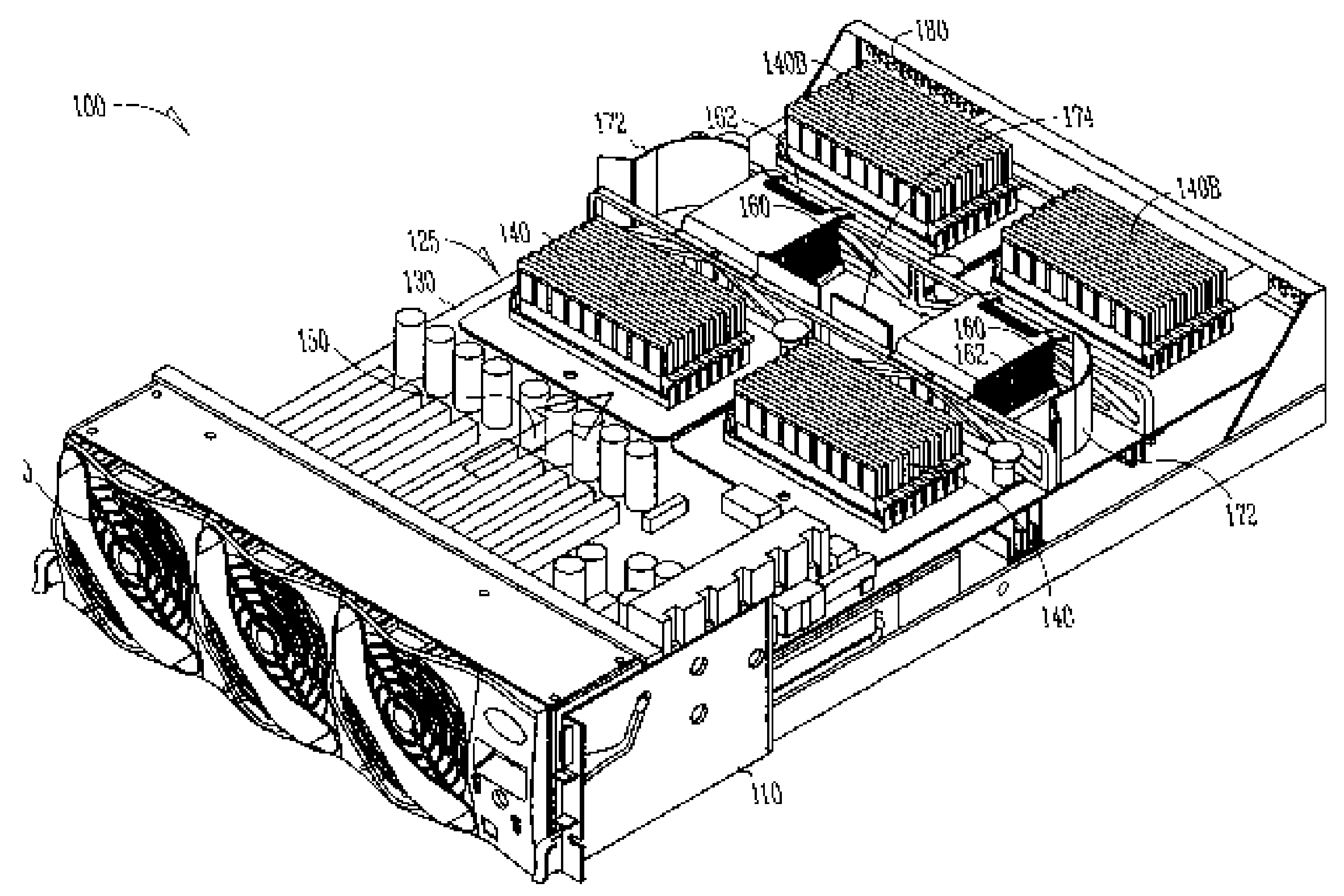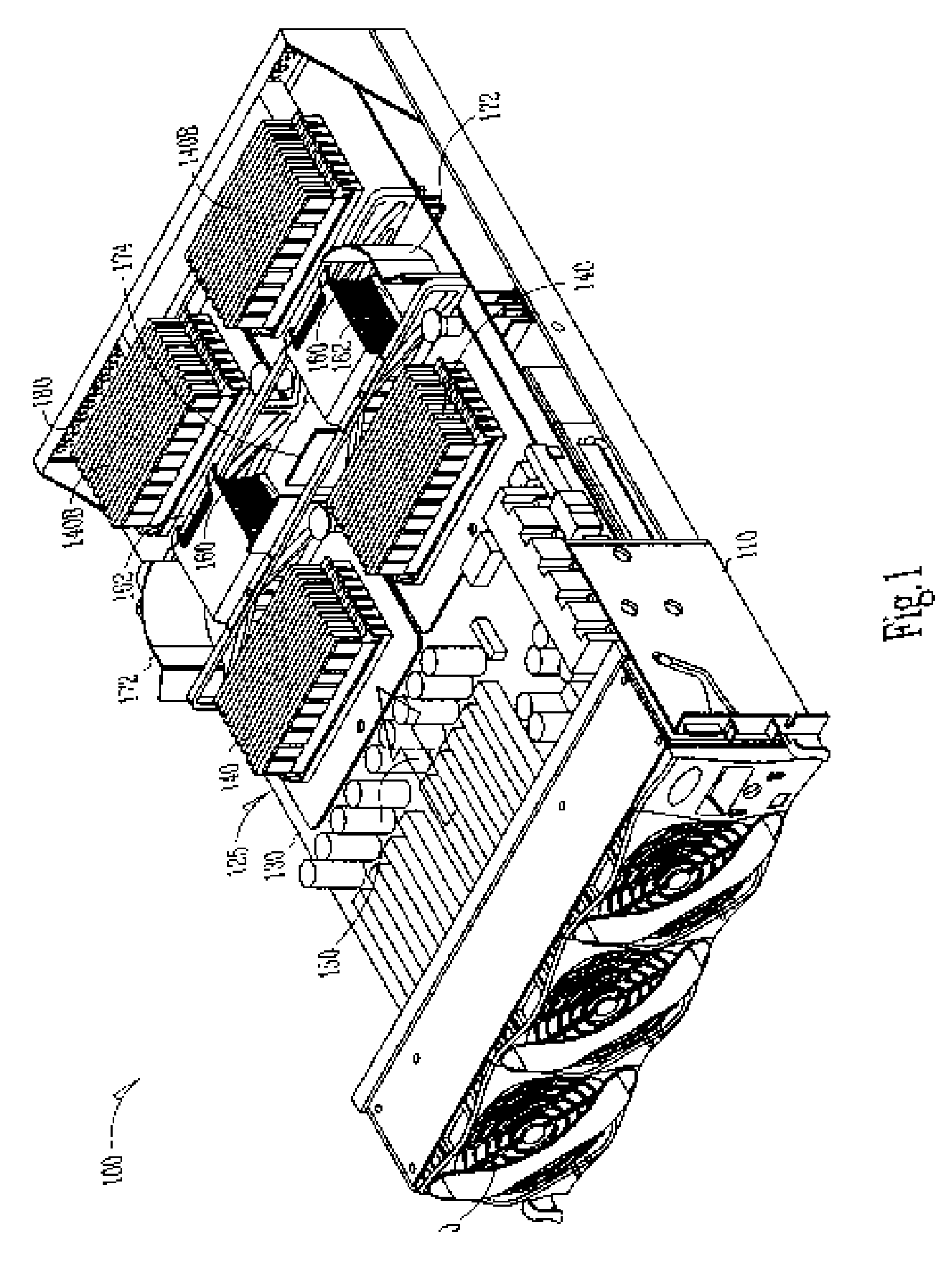Memory module airflow redirector
a memory module and airflow technology, applied in the field of memory devices, can solve the problems of insufficient cooling of all heat producing components, limited cooling effectiveness, and difficulty in providing adequate cooling to computer assemblies, etc., to meet noise and cost constraints, improve thermal distribution and dissipation, and improve the effect of heat distribution
- Summary
- Abstract
- Description
- Claims
- Application Information
AI Technical Summary
Benefits of technology
Problems solved by technology
Method used
Image
Examples
Embodiment Construction
[0025]FIG. 1 shows a perspective view of a prior art embodiment of an air cooled computer assembly 100 including a tray structure 110. Optionally, the computer assembly fits into an enclosure that is “U” shaped. The computer assembly 100 also optionally includes at least one fan 120 positioned at an end of the tray structure 110 for providing airflow through the enclosure. The computer assembly 100 also includes a printed circuit board (PCB) assembly 125 positioned on the tray structure 110. PCB assembly 125 can include heat producing components optionally located on both the top and bottom sides of a printed circuit board 130.
[0026] In the example of FIG. 1, the top side of PCB assembly 125 includes memory boards (or “cards”) 140 that can consist of dynamic random access memory (DRAM) or dual in-line memory module (DIMM) chips. In this example, the memory boards 140 are positioned perpendicular to the direction of airflow 150. Also included in the example of FIG. 1 are application...
PUM
 Login to View More
Login to View More Abstract
Description
Claims
Application Information
 Login to View More
Login to View More - R&D
- Intellectual Property
- Life Sciences
- Materials
- Tech Scout
- Unparalleled Data Quality
- Higher Quality Content
- 60% Fewer Hallucinations
Browse by: Latest US Patents, China's latest patents, Technical Efficacy Thesaurus, Application Domain, Technology Topic, Popular Technical Reports.
© 2025 PatSnap. All rights reserved.Legal|Privacy policy|Modern Slavery Act Transparency Statement|Sitemap|About US| Contact US: help@patsnap.com



